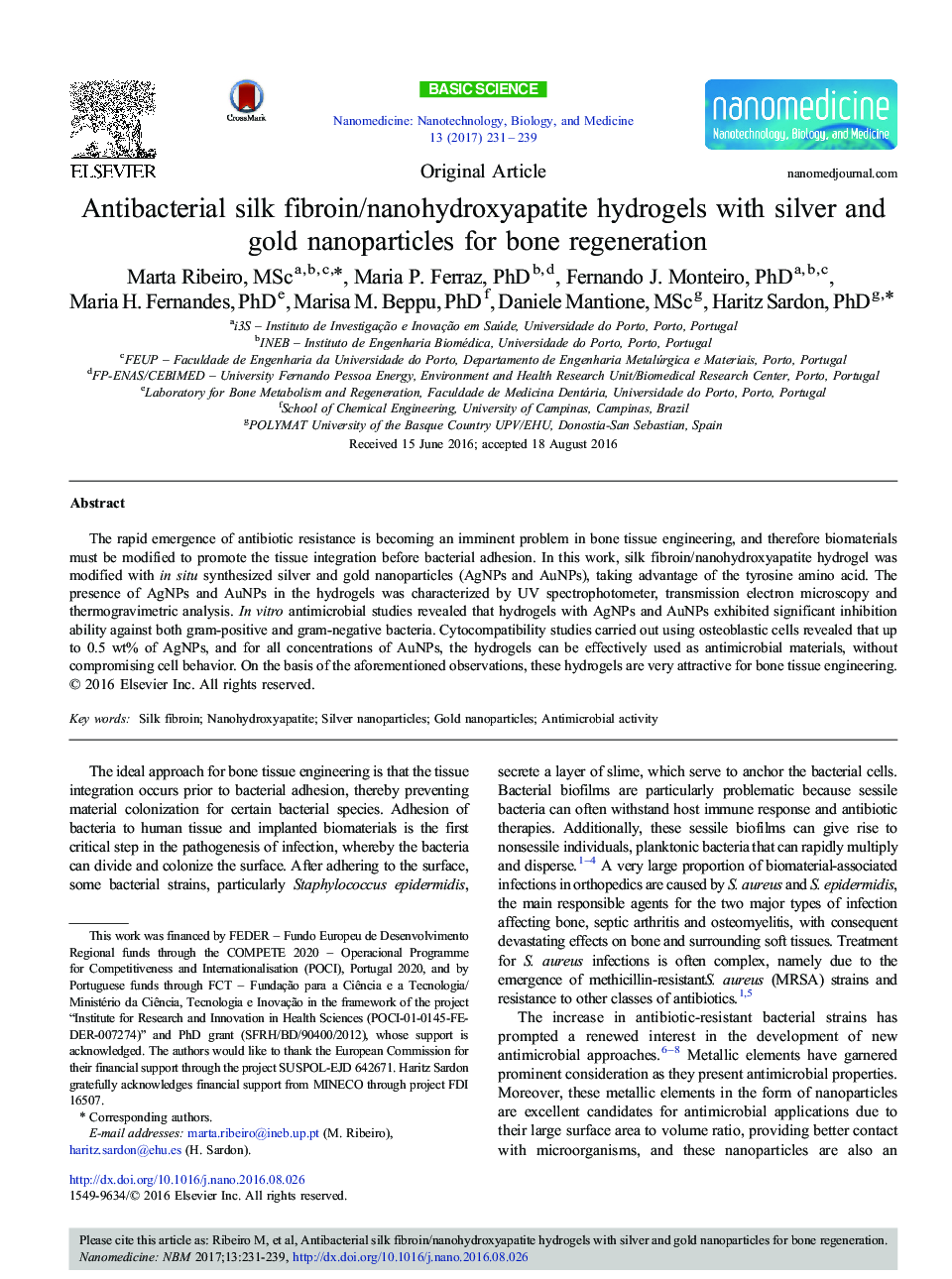| کد مقاله | کد نشریه | سال انتشار | مقاله انگلیسی | نسخه تمام متن |
|---|---|---|---|---|
| 5033075 | 1370006 | 2017 | 9 صفحه PDF | دانلود رایگان |
The rapid emergence of antibiotic resistance is becoming an imminent problem in bone tissue engineering, and therefore biomaterials must be modified to promote the tissue integration before bacterial adhesion. In this work, silk fibroin/nanohydroxyapatite hydrogel was modified with in situ synthesized silver and gold nanoparticles (AgNPs and AuNPs), taking advantage of the tyrosine amino acid. The presence of AgNPs and AuNPs in the hydrogels was characterized by UV spectrophotometer, transmission electron microscopy and thermogravimetric analysis. In vitro antimicrobial studies revealed that hydrogels with AgNPs and AuNPs exhibited significant inhibition ability against both gram-positive and gram-negative bacteria. Cytocompatibility studies carried out using osteoblastic cells revealed that up to 0.5 wt% of AgNPs, and for all concentrations of AuNPs, the hydrogels can be effectively used as antimicrobial materials, without compromising cell behavior. On the basis of the aforementioned observations, these hydrogels are very attractive for bone tissue engineering.
Graphical AbstractThis work presents a highly eco-friendly, rapid and easy method to produce antimicrobial SF/nanoHA hydrogels by using SF as the matrix and the reducing agent when synthetizing well-distributed silver and gold nanoparticles in situ due to strong electron donating properties of tyrosine. The developed materials combine antimicrobial activity, against both gram-positive and gram-negative bacteria, and biological performance suitable for repair bone defects in tissue engineering.115
Journal: Nanomedicine: Nanotechnology, Biology and Medicine - Volume 13, Issue 1, January 2017, Pages 231-239
